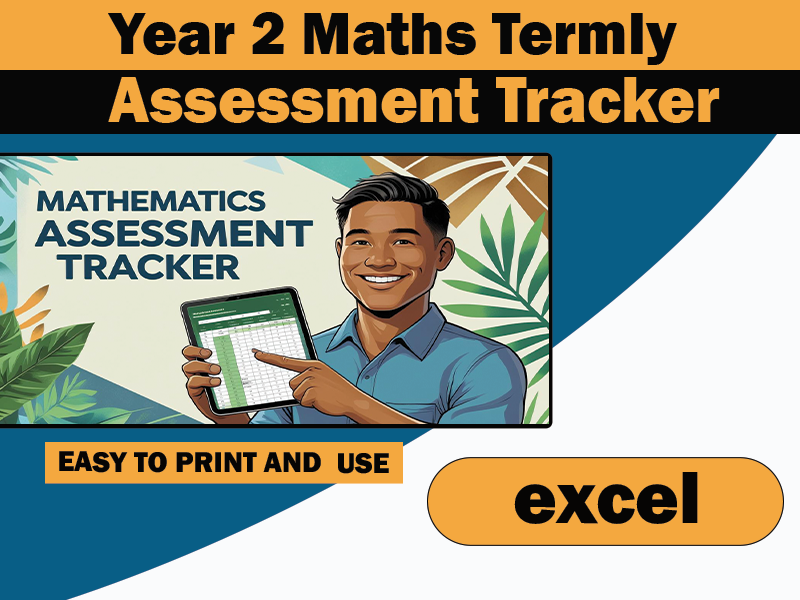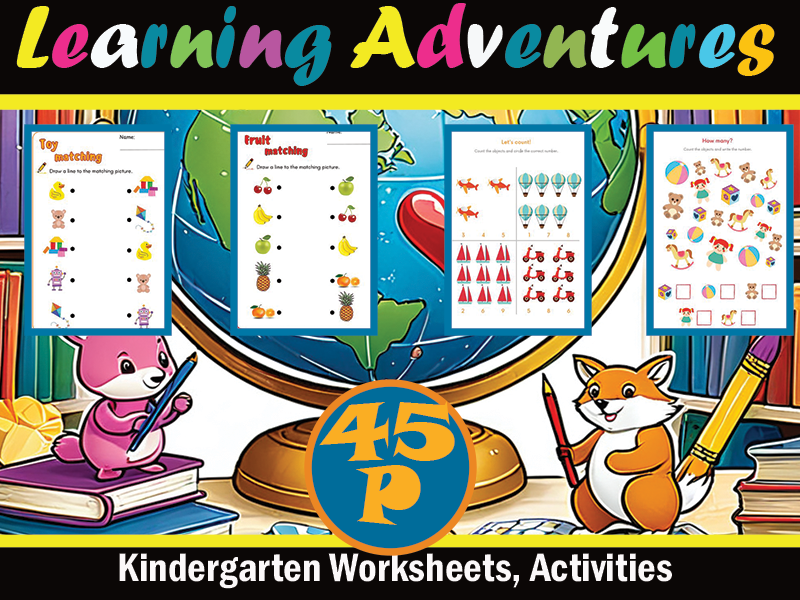32Uploads
575Views
24Downloads
Mathematics

Follow the Dots to Numbers!
Trace your way to number mastery! These worksheets offer a simple yet effective method for young children to learn how to write numbers. By following the dots, kids improve their fine motor skills, hand-eye coordination, and gain confidence in forming each digit accurately. A valuable tool for early math learning!

Math Puzzles for School: Back to School Activities
As students return to school, engaging them with exciting and challenging math puzzles can make the transition smoother and more enjoyable. “Math Puzzles for School: Back to School Activities” is designed to provide educators with a collection of fun and stimulating puzzles that not only reinforce mathematical concepts but also ignite a love for problem-solving. These activities cater to various skill levels and can be used in the classroom or as independent practice at home.
Features of the Math Puzzles Collection
Diverse Puzzle Types:
This collection includes a variety of math puzzles such as:
Crossword Puzzles: Integrating math vocabulary and concepts.
Sudoku: Number placement puzzles that enhance logical reasoning.
Word Problems: Real-life scenarios that require application of math skills.
Fill-in-the-Blank: Puzzles where students complete equations or sentences.
Grade-Level Appropriateness:
Puzzles are tailored to different grade levels, ensuring that students from kindergarten to upper elementary find challenges that match their abilities.
Engaging Themes:
Each puzzle is designed with back-to-school themes, including school supplies, classroom activities, and seasonal changes, making them relevant and exciting for students.
Collaborative Learning:
Many puzzles can be solved in pairs or small groups, fostering teamwork and communication among students as they work together to find solutions.
Answer Keys Included:
Each puzzle set comes with an answer key for quick referencing, allowing teachers to facilitate discussions and review answers efficiently.
Sample Math Puzzles Included
Math Crossword Puzzle
Objective: Reinforce math vocabulary.
Instructions: Create a crossword puzzle with clues related to math terms (e.g., “A shape with three sides” for “triangle”). Students will fill in the crossword based on their knowledge of math terminology.
Sudoku for Kids
Objective: Enhance logical reasoning and number placement skills.
Instructions: Provide a 4x4 or 6x6 Sudoku grid with some numbers filled in. Students will complete the grid by ensuring that each row, column, and subgrid contains unique numbers.
Back-to-School Word Problems
Objective: Apply math skills to real-life scenarios.
Sample Problem: “If a teacher has 24 pencils and wants to distribute them equally among 6 students, how many pencils does each student get?” Students solve the problem and show their work.
Fill-in-the-Blank Math Sentences
Objective: Practice basic operations and number sense.
Instructions: Provide sentences like “5 + ___ = 10” or “___ - 3 = 7” for students to complete. This helps reinforce addition and subtraction skills.
Math Riddles
Objective: Encourage critical thinking.
Sample Riddle: “I am an odd number. Take away one letter, and I become even. What number am I?” (Answer: Seven). Students will solve riddles that require them to think outside the box.
If you would like additional puzzles or specific themes, please let me know!
Sale

End-of-Year/Summer Math Review: Numbers from Kindergarten to Grade 1
“End-of-Year/Summer Math Review: Numbers from Kindergarten to Grade 1” is a comprehensive resource designed to help young learners consolidate their understanding of basic math concepts before transitioning from kindergarten to grade 1. As the school year comes to a close, this review provides engaging activities and exercises that reinforce foundational skills in number recognition, counting, addition and subtraction, and basic problem solving. These activities are ideal for summer practice, ensuring children maintain their math skills while enjoying fun, hands-on learning experiences.
Review Features
Comprehensive Coverage:
The review covers core concepts for kindergarten and introduces essential topics for grade 1, ensuring students are well-prepared for the next stage.
Interactive Activities:
Each section includes a variety of interactive activities, such as games, worksheets, and practical tasks, that make learning math fun and engaging.
Differentiated Practice:
Activities are designed to cater to different learning styles and abilities, allowing for differentiated instruction that meets the needs of all students.
Sample Activities Included
Number Recognition and Counting
Activity: “Count and Color”
Children will count objects (such as apples, stars, and animals) and color the corresponding number.
Example: Count the apples and color the number “5” on the worksheet with a bright red crayon.
Simple Addition
Activity: “Add!”
Students will solve simple addition problems using visual aids, such as pictures of fruits or animals.
Example: "2 apples + 3 apples = ? (Draw 2 apples and 3 apples, then calculate the sum.)
Basic Subtraction
Activity: “Subtraction”
Children will use hands-on tools (such as counters or blocks) to practice basic subtraction problems.
Number Patterns
Activity: “Fill in the Blanks”
Students will complete number patterns by filling in missing numbers in sequences.
“End-of-Year/Summer Math Review: Numbers from Kindergarten to First Grade” is an essential resource for parents and teachers seeking to strengthen basic math skills in young learners. Through a variety of engaging and interactive activities, this review helps children solidify their understanding of numbers while preparing them for the challenges of first grade. By incorporating fun, hands-on learning experiences, the review not only promotes the maintenance of math skills but also instills a love of learning that will continue into the future.
If you would like additional activities, specific worksheets, or other resources tailored to specific math concepts, please let me know!
Sale

Count and Circle Worksheets 1-30 | Number Recognition Activities for EYFS and KS1
Discover a comprehensive collection of activity sheets to help you learn to count and round numbers from 1 to 30! Designed for children in kindergarten and early elementary school, these fun resources encourage number recognition and develop basic math skills.
Strengths:
Counting exercises from 1 to 30
Learning zone activities specifically designed for young people
Interactive number recognition games
Engaging worksheets to motivate students
Perfect for classroom or home learning
With these diverse worksheets, children can build their confidence while having fun manipulating numbers. Give them the joy of learning math with these engaging and fun activities!
Sale

Count and Circle Worksheets 1-20 | Number Recognition Activities for EYFS and KS1
“Count and Circle Worksheets 1-20: Number Recognition Activities for EYFS and Primary 1” is a fun and engaging resource designed to support Early Years and Primary 1 learners in developing their number recognition and counting skills. These worksheets provide a hands-on approach to learning, encouraging children to actively participate in counting activities while strengthening their understanding of the numbers 1-20. With vibrant illustrations and clear instructions, these worksheets are ideal for use in the classroom or at home.
Worksheet Features
Focus on Number Recognition:
Each worksheet focuses on recognizing and identifying the numbers 1-20, helping children become familiar with them in a fun and engaging way.
Interactive Counting Activities:
The worksheets include a variety of activities, such as counting objects, rounding numbers, and identifying quantities, to keep children actively engaged in the learning process.
Illustrations:
Each worksheet is illustrated with attractive images related to the counting theme, making learning visually stimulating and enjoyable.
Varied Levels:
The worksheets are designed to suit different learning abilities and offer varying levels of complexity to meet the needs of all students.
Answer Keys:
Each worksheet comes with an answer key for quick reference, allowing teachers to easily assess students’ understanding and provide feedback.
Sample Worksheets Included:
Count Fruits and Color the Correct Number
Objective: Count each type of fruit and color the correct number.
Directions: Students will count the fruit pictures (e.g., apples and bananas) and color the circle of the corresponding number from 1 to 20.
“Counting and Circle Worksheets 1 to 20: Number Recognition Activities for EYFS and KS1” is a great resource for teachers and parents looking to strengthen children’s number recognition and counting skills. By providing interactive and engaging activities, these worksheets foster a solid foundation in mathematics while keeping learning fun. Whether used in the classroom or at home, these resources will help students build confidence in their counting abilities and prepare them for future math challenges.
If you would like additional worksheets, activities, or specific topics, please let me know!

Year 2 Maths Termly Assessment Tracker
The Year 2 Maths Termly Assessment Tracker is designed to provide educators with a comprehensive tool to evaluate and monitor students’ progress in mathematics throughout the academic year. This tracker allows teachers to record, analyze, and reflect on students’ performance across various mathematical concepts and skills, ensuring that all learners meet their learning objectives and receive the support they need to succeed.
Number and Place Value
Understanding numbers up to 100
Counting in steps of 2, 3, and 5
Comparing and ordering numbers
Addition and Subtraction
Adding and subtracting two-digit numbers
Word problems involving addition and subtraction
Understanding the concept of inverse operations
Multiplication and Division
Understanding multiplication as repeated addition
Solving simple multiplication problems
Understanding division as sharing and grouping
Fractions
Recognizing and creating simple fractions (1/2, 1/4)
Understanding equivalent fractions
Measurement
Measuring length, weight, and capacity using standard units
Telling time to the hour and half-hour
Understanding money and making simple transactions
Geometry
Identifying and describing 2D and 3D shapes
Understanding symmetry and patterns
Statistics
Collecting and interpreting data
Creating simple charts and graphs
3. Assessment Criteria
For each assessment area, teachers can use the following criteria to evaluate student performance:
Emerging (1): The student is beginning to understand the concept but requires significant support.
Developing (2): The student demonstrates some understanding and can perform tasks with minimal support.
Secure (3): The student shows a strong understanding of the concept and can work independently.
Exceeding (4): The student demonstrates an advanced understanding and can apply concepts in new contexts.
Reflection and Next Steps
At the end of each term, teachers should reflect on the assessment data and plan for the next steps in instruction. Consider the following prompts:
Which areas show the most significant growth?
Are there specific concepts that require re-teaching or additional support?
How can we differentiate instruction to meet the varied needs of all learners?
Conclusion
The Year 2 Maths Termly Assessment Tracker is a vital tool for teachers to monitor student progress and inform instruction. By utilizing this tracker effectively, educators can ensure that each student receives the necessary support to thrive in their mathematical learning journey. Regular assessments and reflections will foster a positive learning environment where all students can achieve their full potential.
If you have further needs regarding the tracker or additional resources, feel free to ask!
Bundle

Math Games for Kids - The Complete Package
The Importance of Math Games
Mathematics is a fundamental skill that underpins many aspects of daily life, from budgeting to problem-solving. However, many children find traditional math instruction challenging and disengaging. Math games provide a dynamic and enjoyable way to learn mathematical concepts, reinforcing skills through play. By integrating games into the learning process, children can develop a deeper understanding of math while cultivating critical thinking, teamwork, and a positive attitude towards learning.
Objectives of the Complete Package
This complete package aims to equip parents, educators, and caregivers with a variety of engaging math games suitable for children of different ages and skill levels. The games included in this package are designed not only to enhance mathematical understanding but also to foster a love for math through interactive and enjoyable experiences.







